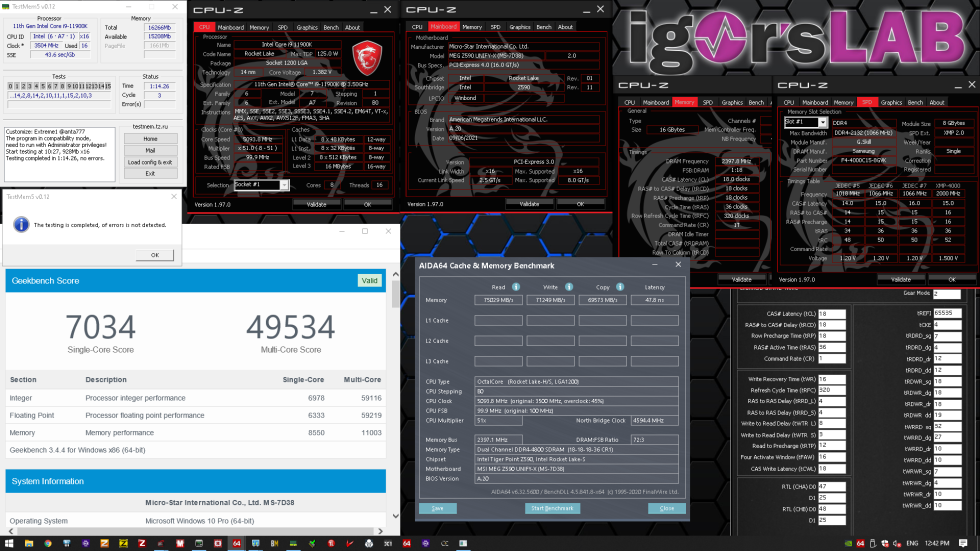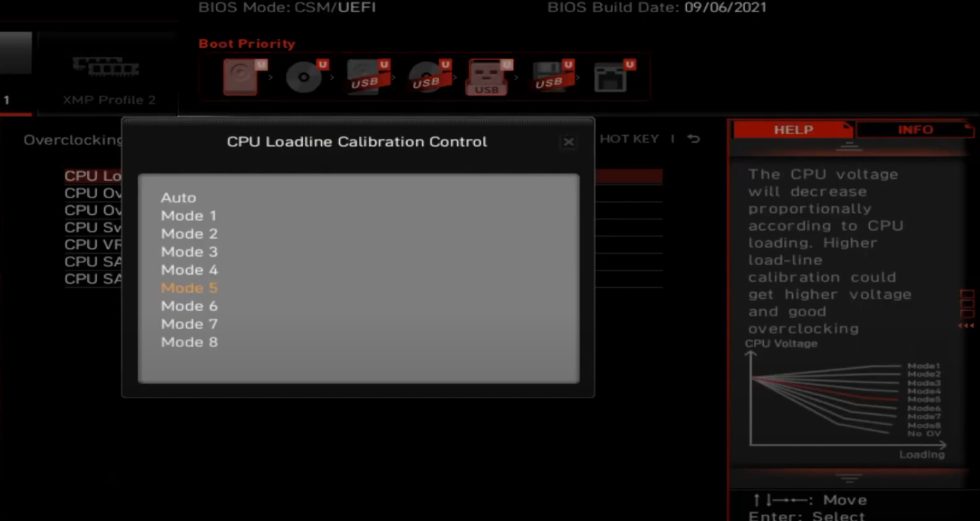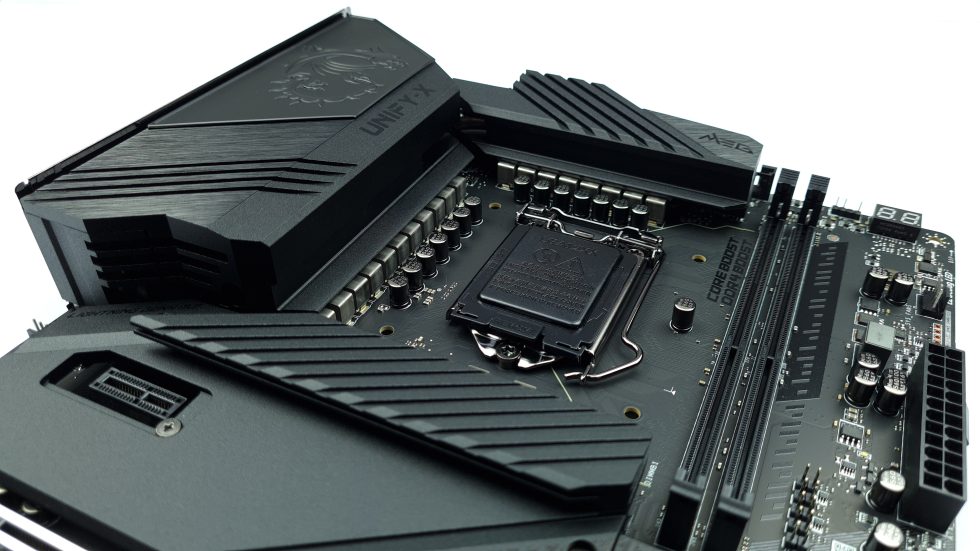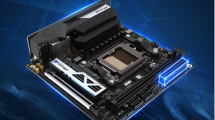As always, a complete list of the test hardware used can be found here:
| Test systems | |
|---|---|
| Hardware: |
|
| Cooling: |
|
| Housing: |
|
| Periphery: |
|
| Measuring devices |
|
Compatibility with most memory ICs in single-rank configuration is good. DDR4-5333 with Hynix DJR is no problem for daily stable operation and also constant over several memory training cycles. The far more pretentious Samsung B-Die can even be booted up to DDR-5066, though this cannot be stabilized, at least not with my individual CPU.
Take a step back in the Gear 2 to DDR4-4800 and stability is much better and timings can be tightened up a lot. With timings 17-17-17-34 at 1.57 Vdimm this is even the best RAM overclocking I could achieve with Rocket Lake so far. The last system that could run these timings with this RAM kit is the Maximus XII Apex with Comet Lake.
By the way, MSI is very generous with the SA and IO2 voltages with the Auto setting at 1.65 V and 1.6 V respectively. For the sake of the CPU’s longevity, much more conservative settings can and should be made for daily use. 1.4 V SA and 1.45 V IO2 were quite sufficient for my CPU.
With dual-rank B-die, the Z590 Unify-X is unfortunately not very happy. At most DDR4-4266 can be trained reliably at all, no matter what RTT combinations or training options I set. This seemingly complete lack of optimization is very reminiscent of the past review of the Z590 Tachyon, whereas today at least impressive performance is still achieved in single-rank, mind you even with through-hole DIMM slots.
MSI is similarly generous with the CPU voltage and its load line calibration. While other boards provide 50 to 100 mV less than the VID voltage requested by the CPU, the Vdroop on the Z590 Unify-X is simply not present. With Vcore = VID the CPU then boosts itself into the bluescreen with Intel’s standard boost after a few seconds of LinpackXtreme. Such aggressive LLC means not only instability but also potential damage to the CPU due to overshoot after high loads, unsightly.
LLC level 5, with 1 being the highest and 8 being the lowest, is what I have found to be the sweet spot. This allows the CPU to remain stable in standard boost with Auto Vcore, but also allows a static OC of 5.1 GHz core and 4.6 GHz cache at 1.4 Vcore in the BIOS. The resulting 1.34 V under heavy AVX load is low enough to keep the core temperatures below 90 °C even with my water cooling.
Conclusion
At around 400 Euros by now, the MEG Z590 Unify-X is the cheapest XOC mainboard for the Rocket Lake platform. With the rich features, such as the lush internal and external IO, the variety of accessories and the simple, practical, completely passive design, the board also creates a premium impression, as you would otherwise only expect from much more expensive boards. During use, this impression initially continues in the BIOS with its exemplary layout and range of options, but falters when you start your first serious XOC attempts or use duak-rank RAM.
You can probably already tell, my feelings about this board are very mixed, as it makes a really good impression up to this point. But unfortunately, the lack of optimization for dual-rank B-die, the power supply that’s way too aggressive on auto, and the non-functioning retry and safeboot buttons are real deal-breakers. The fact that the German end customer support has unfortunately been really unfortunate and the software situation is very mixed, adds to the difficulty.
Unfortunately, it can no longer live up to the claim of an XOC board, at least in my opinion. If MSI had installed working on-board buttons instead of jumpers and linked the Command Center Lite software on the download page, the resume would probably go more in the direction of price-performance secret tip for overclocking. Well, if, if… However, this motherboard still remains a really good 2-DIMM option for gaming and daily stable overclocks, excellent for running single-rank B-Die memory at that.
Of course, Rocket Lake is already obsolete by now and that has probably been the case for motherboard manufacturers with insider knowledge since just a few weeks after the launch of the CPU generation. Nevertheless, a product must always also be evaluated and criticized on its own merits. And if you go by that, unfortunately, you get the impression that the board has simply not been developed consistently to the end. We can only hope that with the upcoming Z690 variant, which has already been leaked, MSI will be able to eliminate the many teething problems. Because then the Unify-X could really mix up the much more expensive competition.
MSI MEG Z590 Unify-X (7D38-006R)


































4 Antworten
Kommentar
Lade neue Kommentare
Mitglied
1
Mitglied
Mitglied
Alle Kommentare lesen unter igor´sLAB Community →